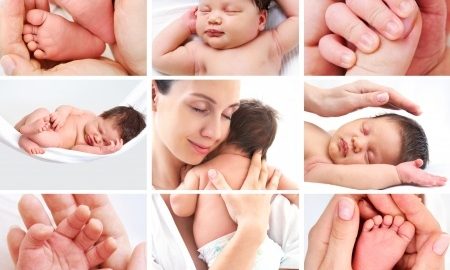Three-Parent Baby Procedure Hits Roadblock

The innovative yet controversial procedure that is used to create three-parent babies has hit a roadblock. A risk has been identified in which the defective mitochondria, which are replaced with healthy mitochondria from the “third” parent, may stage a comeback.
Mitochondria are the organelles in the cell that generate energy. When the DNA of mitochondria undergoes a mutation, energy generation in the cell is impaired. This leads to disorders of the muscles and brain, for example, which are starved of energy. In women with defective mitochondria, researchers have developed a procedure to replace these with healthy ones. This prevents the diseased mitochondria from passing on to the couple’s child.
The procedure involves transferring the mother’s egg cell nucleus into the shell of an egg obtained from a donor with healthy mitochondria. When this egg is fertilized by sperm, the child born of this three-parent procedure has most its DNA from the father and mother—all except the mitochondrial DNA, which is from the third parent or donor mother.
Now, Dieter Egli, stem cell biologist at the Stem Cell Foundation in New York, and colleagues have advised caution. In a report published in Cell Stem Cell, researchers noted that if even a trace amount of defective mitochondria gets transferred with the mother’s egg cell nucleus, it can replicate unpredictably and take over the cell. According to Vamsi Mootha, a mitochondrial biologist at Harvard Medical School, it was initially presumed that this carry over was inconsequential, to the order of 1 percent. The paper published in Cell Stem Cell, however, demonstrates that even tiny amounts of unhealthy mitochondria can be amplified to concerning levels.
When Egli and colleagues conducted a series of experiments, they found that in most cases transferring mitochondria was not problematic. However, in a small number of cases, following replacement therapy, the defective mitochondria were able to stage a coup of sorts in the donor cell. In these cases, the mutant mitochondria replicated and grew from less than 1 percent to becoming the predominant type of mitochondria in the donor cell. For example, a particular mitochondrial DNA called the H1 haplotype was found to balloon from 1.3 percent to more than 53 percent after three dozen rounds of growth in the laboratory. The researchers also noted that after 59 cycles of growth, the percentage of unhealthy mitochondria again dwindled to 1 percent.
The research is a caution to hopeful parents about the risk of failure associated with this pioneering procedure. Further research will determine how high the risk of mutant mitochondria resurgence is. Scientists will also need to work on improving transfer techniques. Meanwhile, experts in the field advise a cautious approach. Paul Knoepfler, a stem cell researcher at UC-Davis hopes clinical trials in humans will be postponed until more data is available. Although the United Kingdom approved the technique last year, a three-parent baby is yet to be born. The Institute of Medicine in the United States has ruled that the producing male embryos with this technique would be ethical. Nonetheless, a change in federal laws will be needed before clinical trials can be conducted.
References:
- https://www.sciencenews.org/article/risk-identified-procedure-three-parent-babies


